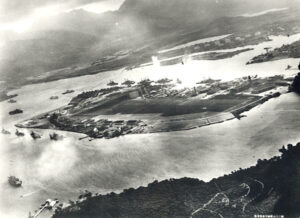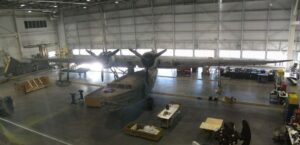JRS-1 and The Daring Flight of Wesley Hoyt Ruth
Everybody had their jobs. For Wesley Hoyt Ruth, on December 7th, 1941, when the Japanese started bombing Pearl Harbor, his job was of the utmost importance: locate the Japanese fleet responsible for the incoming fighters and bombers. While sailors and Marines scrambled at the harbor to fight back and rescue the injured and trapped, Ruth jumped into the pilot seat of a Sikorsky JRS-1 amphibious seaplane, destined to enter the fray with little more than a hope that he would return unscathed.
Ruth’s Mission
After seeing the thick smoke billowing from the USS Arizona, Ruth sprang into action and reported to Ford Island. Waiting for him was the amphibious plane that would fly him over the Pacific in search of Japan’s carrier fleet. With a co-pilot, three sailors, and a radioman in tow, armed with three rifles between them, Ruth's became one of the first planes to be able to successfully depart Pearl Harbor amidst the destruction and chaos.
Behind him, the attack continued, with hundreds of American sailors killed, but Ruth and his crew moved forward, determined to pinpoint the location of the attacking fleet. Flying at about 1,000 ft, just below cloud cover to allow for a swift concealment, it’s believed that the pilot came within 30 miles before having to turn around. According to Ruth, the Japanese fleet had altered its course to be able to pick up the fighters that were low on fuel and ammunition.
The Hard Part
Despite its possible proximity to the carrier fleet, the Sikorsky JRS-1 wasn’t targeted or shot down. In fact, as Ruth and company were about to find out, the Japanese weren’t their only threat. Flying back into American airspace meant flying into American anti-aircraft fire. Through the chaos, there was no guarantee that the seaplane wouldn’t become collateral damage from a stray or misfired shot.
Thanks to Ruth’s clever flying, the JRS-1 and her crew arrived safely back at Pearl Harbor, but their work was far from over. After the attack on Pearl Harbor ceased, the aircraft that had flown Ruth and his crew in search of the enemy fleet was back in use, scouring the Pacific looking for the Japanese fleet to assess the possibility of a second attack.
After the War
On September 5th, 1942, the seaplane was pulled from duty and moved to Commander Fleet Airship 31 at Moffett Field. Shortly before the fighting ended, in August of 1945, the JRS-1 was removed from service and placed in storage for two years before being used in in a NACA/Langley study. Her final trek was to the Smithsonian National Air and Space Museum. Today, the JRS-1 is on public display at the museum's Steven F. Udvar-Hazy Center in Chantilly, Virginia, a testament to the heroics of the American servicemen stationed at Pearl Harbor on December 7, 1941.
As for Ruth? For his efforts that day he received a Navy Cross. He remained with the navy until 1960, when he finally retired. On May 23rd, 2015, at the age of 101, Ray passed away, the story of the JRS-1 keeping the memory of the brave serviceman alive.









